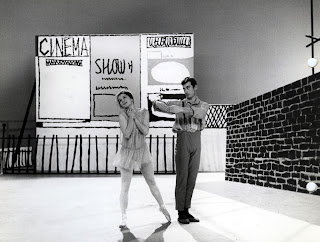A
couple of months ago, I finally got around to seeing the 2009 film ‘Mao’s Last
Dancer’, based on the autobiography by Li Cunxin. I really enjoyed the film, so decided to read
the book.
It
is a heart-warming story, told in a very simple and honest fashion. When Li was 11, he was taken from a poor
village in China to Beijing to study ballet.
His description of the process, being chosen from his classroom, going
through a number of auditions and tests, and finally ending up at Madame Mao’s
academy, is quite fascinating. He had
very little idea of what ballet even was, and had a fear he was going to be
made to dance on pointe. In an article I
found on www.ballet.co.uk I read that whilst writing the book, Li called his former schoolteacher
to ask her why she had pointed him out to the talent scouts, and she replied
"I think the only reason was that you ran fast". What a wonderful statement! It was also interesting to read about the school and
life in China during the 1970s and the importance placed on being a good
communist as well as a good dancer. Li later said that if they had spent more time on dancing than politics, then they would have all been better dancers.
In
1979, he was chosen to go on a cultural exchange to Houston Ballet in
Texas. His touching naivety on arriving
in the USA is understandable. He had
been fed propaganda about how poor a country the US was, and so was completely surprised by what he saw when he arrived. He was
nurtured and looked after by Ben Stevenson, the then artistic director. A combination of falling in love and
realising the freedom that dancing outside China could bring him, led him to seek
asylum in the US. He had wanted to
return to China to visit his family, but this was denied, and he was held at
the Chinese Consulate in Houston for 21 hours while his case was debated. Thanks no doubt in some small way to the fact that Barbara Bush
was then a patron and great supporter of the ballet, he was allowed to stay in
the US, and went on to dance with the Houston Ballet. He later married the Australian dancer Mary
McKendry, and eventually moved to Melbourne, retiring from ballet in 1998,
and becoming a stockbroker.
Li Cunxin and Mary McKendry in the pas de deux from Esmeralda
Of course his childhood in China and
the culture shock of his arrival in the West are fascinating to read about, but
perhaps the most poignant moment in both the film and the book is when his
parents are allowed out of China to see him dance. The description of their arrival at the
theatre, including causing a delay in the start of the performance as their
flight was delayed, cannot help to bring a tear to the eye of even the most
hard-hearted. The book is well worth reading, even if you are not really interested in ballet, as an account of a childhood and an adulthood in two very different worlds. It is perfect for either a summer read or curling up on the sofa with in the winter.
The surprise connection occurred as
I was nearing the end of the book. I sat up bolt upright as I read “Ben had chosen Janie Parker and me as his first cast and Mary was paired with Kenneth
McCombie as second cast”. Could it be
the same Kenneth McCombie who went to the same ballet school as me when I was a
child? He was quite a bit older than
me and one of the few boys in the school. I turned to Google for help, and sure enough,
I found that he had gone on to dance with London Festival Ballet and from there to Houston. After retiring from dancing, McCombie moved back to
Fife, where he works today for the local council.
I was also very pleased to be able to pass this on to an old friend of mine
who had been discussing him recently, and had wondered what had happened to him. What a small world we live in.
Kenneth McCombie 1978
And
finally some trivia! The parents of Chi Cao, who took the role of Li in the film, were two of Li’s former teachers at the Beijing
Dance Academy. He is a dancer with the Birmingham Royal Ballet.
‘Mao’s
Last Dancer’ by Li Cunxin is published by Penguin Books.
The photo of Kenneth McCombie was taken by Daniel Sorine http://www.flickriver.com/photos/soulico/3058874130/
And....if you want to see what happened to him...http://news.bbc.co.uk/2/hi/uk_news/scotland/edinburgh_and_east/8183342.stm





